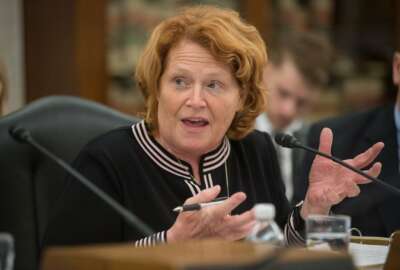
Growing number of flexibilities, alternative personnel systems a sign agencies are looking for escape
More and more agencies are turning to alternative personnel systems as a solution to hiring, accountability or performance challenges.
Federal experts say the one-size-fits-all personnel system off the rack has practically become a thing of the past.
Instead, more and more agencies are turning to alternative personnel systems as a solution to hiring, accountability or performance challenges.
The Commerce Department has an alternative personnel system. Its subcomponents, like the National Institute of Standards and Technology and National Oceanic and Atmospheric Administration, have their own. The Transportation Security Administration has one, too.
The list is long, and in some ways, growing and diversifying. The Government Accountability Office last year counted 105 different hiring authorities, though most human capital specialists only use about 20 of them.
After years of frustration with the Veterans Affairs Department, Congress finally authorized firing and disciplinary flexibilities. The goal, lawmakers said, was to give the secretary the ability to more quickly fire poor performers and executives accused of misconduct.
And the Defense Department, for example, counted 41 new authorities and flexibilities since fiscal 2010, Anita Blair, a fellow with the National Academy for Public Administration, said Thursday during NAPA’s annual public meeting.
For some federal experts, the proliferation of alternative personnel systems, authorities and flexibilities is a sign that agencies, frustrated by the constraints of an outdated civil service system, are looking for a way out.
“For those of us on the side of mission and flexibility, less uniformity is the rule of the day, not the exception but the rule,” said Ron Sanders, former chief human capital officer for the Office of the Director of National Intelligence and now director of the University of South Florida’s School of Public Affairs. “We want out of the uniform rules, because we’re different. On the other hand, there are some who will argue that if you don’t have uniformity, you don’t have merit.”
As the Civil Service Reform Act of 1978 approaches its 40th anniversary, Sanders and others in the federal community say the future depends on striking the right balance between the traditional values that govern the federal workforce and some flexibilities that let individual agencies achieve their missions.
“Make no mistake about it, there is a broad, national effort to try to unravel these basic principles as a way to try to unravel government’s size and power,” said Don Kettl, a professor at the University of Maryland’s School of Public Policy. “It’s big. It’s important. It’s underway and it’s something that we need to grapple with. The challenge is that if we allow the threads one at a time to be pulled out … you could run the risk of not having merit left.”
Kettl is referring to the concept of merit system principles, the standards built into Title 5 of the U.S. Code that ensure objectivity in the federal hiring — and firing — process.
“We have a conception of merit that is bound by issues of compliance,” he said. “On the one hand, principles are important, and we have a policy in this country about providing preference to veterans. But what happens is we’ve lost, in the search for compliance, we have to try to pursue outcomes.”
Meanwhile, some agencies are beginning to notice that the alternative personnel systems they created are already showing their age, Blair said.
“Some of them that are a little more vintage are starting to show the strains of themselves being so regulated, so constrained, that in order to meet 21st century demands, something that was new 30 years ago already needs attention to grow and respond to common needs,” she said.
But human capital experts say too many flexibilities and alternatives creates more confusion for HR specialists, who need specialized training on those specific systems, Blair added.
Sanders said the federal community should look to state and local governments for ideas on how to tweak the current civil service system.
“It takes a village,” he said. “Everything important that the government does has an ‘inter’ in front of it. International, inter-governmental, inter-agency, inter-you-name it. We need to start worrying about human capital far more generally.”
Congress, Kettl said, could help relieve some of the frustrations.
The Senate Homeland Security and Governmental Affairs Subcommittee on Regulatory Affairs and Federal Management is holding a series of listening sessions and fact-finding hearings on federal personnel, hiring, performance management and other topics.
But most other lawmakers lack the political will to make significant change happen, Kettl said.
“There are extraordinary opportunities within the fabric of current law, and audibly we may need legal changes, but to wait for that to happen is to unnecessarily hamstring ourselves to opportunities we suggest and present,” he said. “There’s a long way we can go without having to wait for Congress, and waiting for Congress is, in some ways, letting everybody off the hook.”
Copyright © 2025 Federal News Network. All rights reserved. This website is not intended for users located within the European Economic Area.
Nicole Ogrysko is a reporter for Federal News Network focusing on the federal workforce and federal pay and benefits.
Follow @nogryskoWFED
Related Stories





